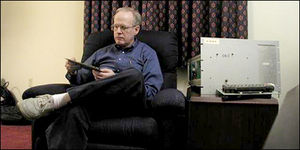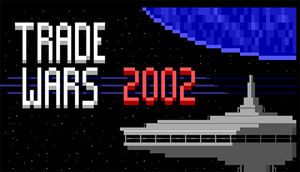Bulletin Board Systems
This article was initially published in Today's Engineer on March 2013
Over the past twenty years, the Internet has dramatically transformed the way society exchanges information and communicates with one another. The modern internet has its roots in ARPANET, which was first launched in 1969. But the general public would have to wait several decades before it could use this communications technology. Before the World Wide Web became popular in the mid 1990s, millions of people used bulletin board systems as their primary method of getting online. Accessible through dial-up modems, bulletin board systems (BBSs) were the first method that the general public widely used to communicate with other people through their computers.
The transmission of data through the phone line predates both ARPANET and the BBS. A modem, short for Modulator-Demodulator, modulates digital information into an analog carrier signal which can be transmitted through the phone lines. On the other end, the modem takes the carrier signal and demodulates into digital information which can be processed through the computer. Early modems were introduced during World War II to transmit punched card data. The first commercially available modem was the Bell 101 dataset, introduced in 1958.The Bell 101 allowed for the transmission of data at 110 baud. It was based on a 1954 modem that Bell designed exclusively for use with the military’s the SAGE air ground control system. 1962 saw the 103a dataset, which allowed for the transmission of data at 300 baud. The “baud” unit of measurement was named after Émile Baudot, and represented the amount of bits per second a modem could transfer. The 300 baud speed remained the standard for the next 20 years.
In 1975, computer hobbyist Ward Christensen purchased an Altair and at a local computer hobby group, Chicago Area Computer Hobbyists’ Exchange (CACHE), met fellow hobbyist Randy Suess. Christensen had purchased an Altair 8800, and in 1977, Hayes Microcomputer Products introduced the 80-103A modem, which was compatible with the Bell 103a dataset and designed to run on the Altair 8800 S-100 bus. By 1978, there was no standard media format between different computer manufacturers, which posed a logistical problem for transferring files between different architectures. After the introduction of the 80-103A modem, Christensen conceived of the idea of using the phone lines to create a bulletin board system for CACHE, to exchange messages with one another across different hardware platforms. After a blizzard in January of 1978, Christensen worked with Suess over the course of the next month developing the Computerized Bulletin Board System software, or CBBS, which launched on February 16th, 1978. Users could dial into CBBS, read what messages have been previously posted, and reply to messages left by other users.
The CBBS software spread across the nation. The idea of a computerized bulletin board system immediately resonated with computer hobbyists, and much of the language and structure of CBBS was adopted by subsequent BBS software. Early BBS’s did not display text to screens, but instead fed data to a printer. Operating a modem was a difficult task which ensured that nearly all early BBS users were computer hobbyists. This changed in 1981 with the introduction the Hayes Smartmodem in 1981, which operated through the serial port allowing the computer to send it commands for automatic dialing. This eliminated much of the difficulty with installing and using a modem, as the dialing would be done though software. Together with the rising popularity of the personal computer, which replaced the computer kit, a new group of younger and less technically savvy users could now participate in BBS’s. Different BBS software packages were developed to run on different hardware platforms including the Atari, TRS-80, Commodores and Apple.
The bulletin board system was initially intended for the sharing and replying to messages but it quickly took on other features, most notably file sharing. The BBS was also the first massively multiplayer online gaming environment. Games like Trade Wars 2002 and Solar Realms Elite were large turn based strategy games. As the early BBS games, referred to as “door games”, were not designed to host multiple players concurrently, many games adopted the format of having a set amount of turns per day to ensure fairness between the players. Many BBS games adopted 16 color ANSI artwork. In 1993, RIPscrip was introduced, which was capable of a finer EGA resolution.
In the early 1980s, BBS’s were often machines that were only connected to the individual users who dialed in, and were not part of a larger network. The first BBS software to network with another BBS was Fido BBS. Originally designed to work on a DEC Rainbow, Fido was reworked in 1984 to network with other Fido BBS’s and exchange shared messages and files. Fidonet provided for a massive worldwide network of BBS’s that allowed for the large scale sharing of massive amounts of data that which was downloaded between regions and transferred to individual nodes daily. By 1985 there were 400 Fidonet nodes. The system rapidly increased with time, peaking with 35,787 nodes in 1995.
Modem speeds became the limiting factor for transferring of large amounts of data. 300 baud transferred roughly at a rate of 30 characters per second, about the rate one can read. However, for large data files, transferring at 300 baud could take hours, or even days. Echo cancellation allowed for higher modem speeds and the V.32 standard, allowing for 9600 baud speeds, was introduced in 1984. The V.32bis standard was introduced in 1991, based on parity check coding and trellis modulation methods described by Gottfried Ungerboeck in a 1982 paper, and allowed for 14,400 baud speeds. These high speeds which became affordable by the early 1990s, led to a massive expansion of BBS popularity. In 1988 there were an estimated 5,000 BBS’s in the United States. This grew to an estimated 25,000 by 1992.
Alongside the rapid popularity explosion of the BBS came concurrent developments in internet technology. Using hypertext, both Gopher and the World Wide Web were launched in 1991. 1993 saw the introduction of Mosaic, the first graphical browser. Before this, the World Wide Web was accessed through text-only browsers like Lynx. Mosaic allowed for much easier and user friendly access to the World Wide Web, and instantly became popular. .
Due to growing demands, many BBS Sysops used their modem infrastructure to accommodate internet access as well, and ran their bulletin boards side by side with an internet connection. Many of the first commercial internet service providers started out this way, and by 1995 access to the internet quickly overshadowed the BBS. In the late 1990s, the number of BBS’s fell as quickly as it rose in the early 1990s. By 1997 there was an estimated 10,000 BBS’s active in the United States, down from an estimated 45,000 in 1995.
The internet and World Wide Web have evolved a great deal since Mosaic’s introduction in 1993. Billions of people are connected to the internet throughout the globe. However, BBS’s still are not completely dead. While their numbers are estimated to be in the hundreds today, some remain active. Most of today’s BBS’s can be accessed via the telnet protocol through the internet, though some still maintain the ability to connect through the phone line. BBS’s also still enjoy popularity in regions of the world where high speed internet is still not implemented. A vast amount of archival text and art from BBS culture have been preserved at http://www.textfiles.com/. Even though internet speeds today are over thirty thousand times as fast as the original 300 baud modems, and internet infrastructure and usage is far more complex and vast than Fidonet at its peak had to offer, it was an important first step in the development towards today’s online community.


